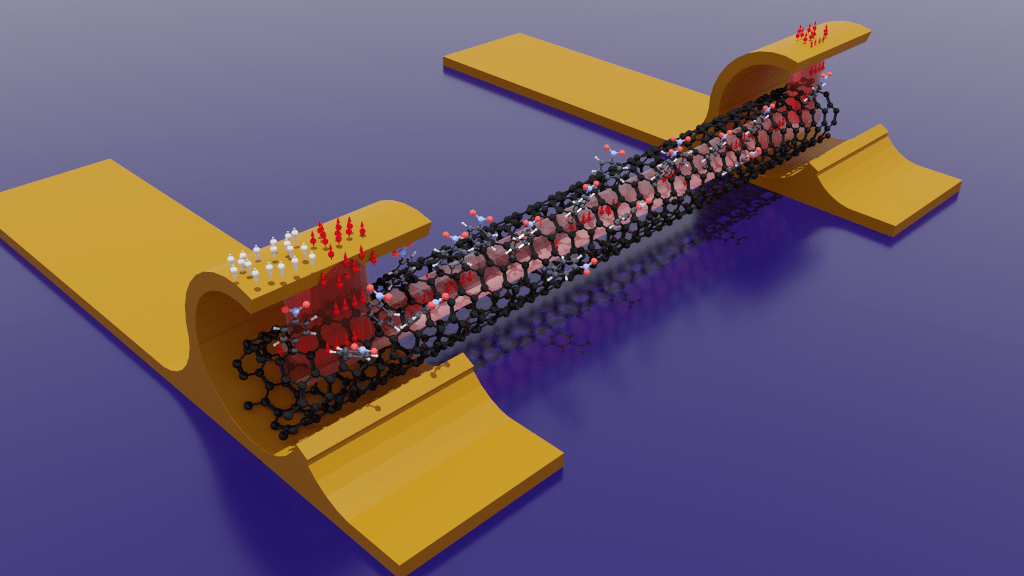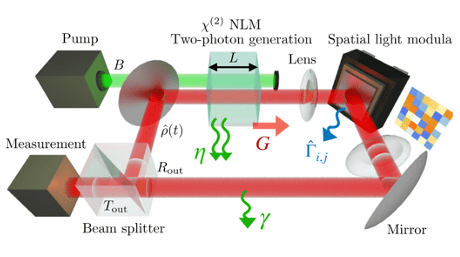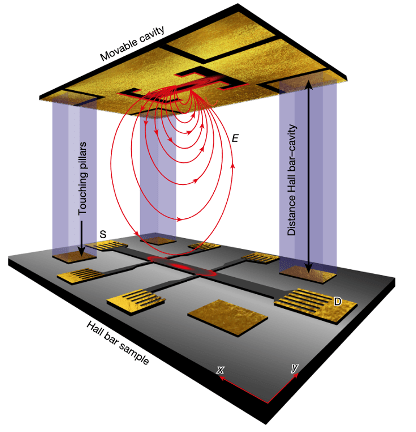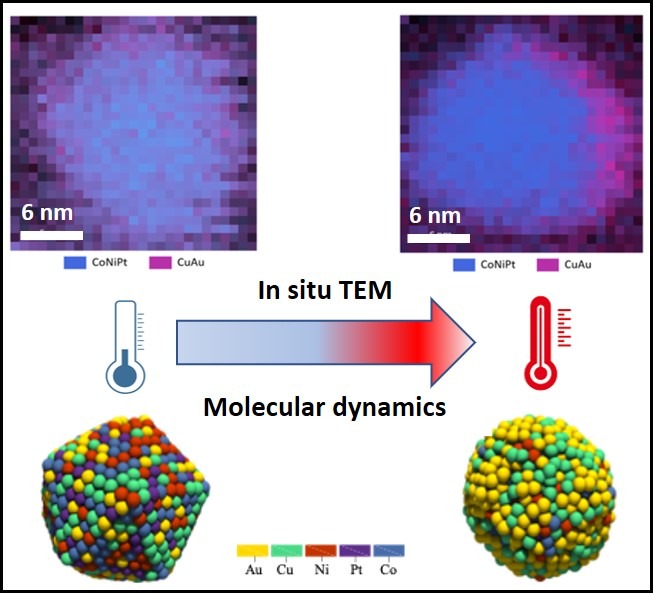Faced with the technological and societal challenges represented by the storage, transfer and processing of computer data, electronic devices exploiting the quantum nature of electrons have been integrated for many years in the computers, smartphones and other daily-used electronic circuits. Problem: the quantum information carried by these electrons that could make these computers even more powerful if fully used is still very unstable in nature. It is practically impossible to transport it without losing it between the components present on electronic boards. In order to overcome this instability and to gain considerably in data processing speed, three teams from the Université de Paris and the Université Catholique de Louvain, under the direction of Clément Barraud from the Quantum Materials and Phenomena Laboratory, have managed to create an artificial nanostructure allowing the transport over long distances of quantum information using spintronics, a technology which consists in using the spin of each electron in addition to their charge. The results of this study are published on July 31, 2020 in the journal Science Advances.

Chemically modified multi-walled carbon nanotube connected between two magnetic electrodes serving as a spin source and a spin detector.
The amount of data processed by computer is growing exponentially and will continue to grow in the years to come, especially with the arrival of 5G. Everyone has several thousand photos, hours of videos or even music in their smartphone or computer. The storage of all of this information and its use in order to be read, modified, and recorded represent the classic process of computer processing of information. In order to optimize these processes as much as possible, certain spintronic circuits, a quantum technology born in the 1980s which uses the spin of the electron in addition to its charge, are today present in practically all the elements of information storage whether in a magnetic hard disk or an MRAM (Magnetic Random Access Memory). “Problem, if the storage of information in magnetic form has made tremendous progress in recent years, approaching 40 Go/cm², the transport of spin information on a chip remains delicate and very unstable” recalls Romeo Bonnet, first author of this study. To overcome the current paradigm of computer architectures, this technological lock remains absolutely necessary to unlock.
A protective cage for the transport of information at quantum speed
Quantum information is inherently extremely fragile. While many theoretical proposals have emerged in recent years around spin logic circuits, outperforming the competition in terms of energy consumption, an optimized information transport system was therefore still lacking. This is the challenge faced by teams from the Quantum Materials and Phenomena Laboratory and the ITODYS laboratory at the Université de Paris in collaboration with a team of theoreticians at the Université Catholique de Louvain in Belgium. “We succeeded in generating this protective platform using multi-walled carbon nanotubes of which only the outer wall is chemically modified by molecules. Like a cage.” explains Pascal Martin from the ITODYS laboratory.
The benefit of this chemical modification of the nanotube is two-fold: it allows a very strong spin signal to be sent while isolating the spins towards the internal walls of the nanotube which are naturally more protected against decoherence phenomena which dilute the original information. “Calculations based on the experimental data appear to push the spin transport distance beyond a millimeter against a few tens and hundreds of micrometers previously measured in graphene, a very close system.” adds Aurélien Lherbier from the Université Catholique de Louvain. “This technological advance could make it possible to materialize this new generation of quantum spin logic devices, pushing back the limits of current computer architectures by allowing both a very significant time saving in data processing but also in the sharp reduction of the energy consumption of computers ”concludes Clément Barraud.
Link to the press release on the University of Paris website
Contact:
Clément Barraud (clement.barraud@u-paris.fr)
Reference:
Giant spin signals in chemically functionalized multiwall carbon nanotubes, Roméo Bonnet, Pascal Martin, Stéphan Suffit, Philippe Lafarge, Aurélien Lherbier, Jean-Christophe Charlier, Maria Luisa Della Rocca, Clément Barraud, Science Advances 6, 31, eaba5494 (2020)
À lire aussi

Emergent Equilibrium in All-Optical Single Quantum-Trajectory Ising Machines
A collaboration between the Theory group at MPQ, CREF Rome, and Sapienza University of Rome has shown that multimode all-optical systems driven by two-photon processes can reach thermal equilibrium at the level of single quantum trajectories. The study is published in...

Cavity-enhanced fractional quantum Hall phases and cavity-modified spin splittings
A collaboration between the Equipe Théorie at MPQ and scientists from ETH Zurich and the Flatiron Institute has demonstrated, both theoretically and experimentally, that giant vacuum fields confined in a split-ring resonator cavity can profoundly alter...

Unravelling the nonlinear generation of designer vortices with dielectric metasurfaces
Researchers from the DON team have demonstrated and analyzed the generation of high-purity second-harmonic vortices with dielectric metasurfaces. These results are published in Light: Science and Applications. Vortex beams are currently drawing a great deal of...

Thermal stability of high-entropy nanoalloys: reality or chimera?
By studying at the atomic scale the thermal behavior of nanoparticles composed of gold, cobalt, copper, nickel and platinum, scientists have revealed that the stability of these so-called high-entropy nanoalloys is much lower than expected, as gold and copper...
